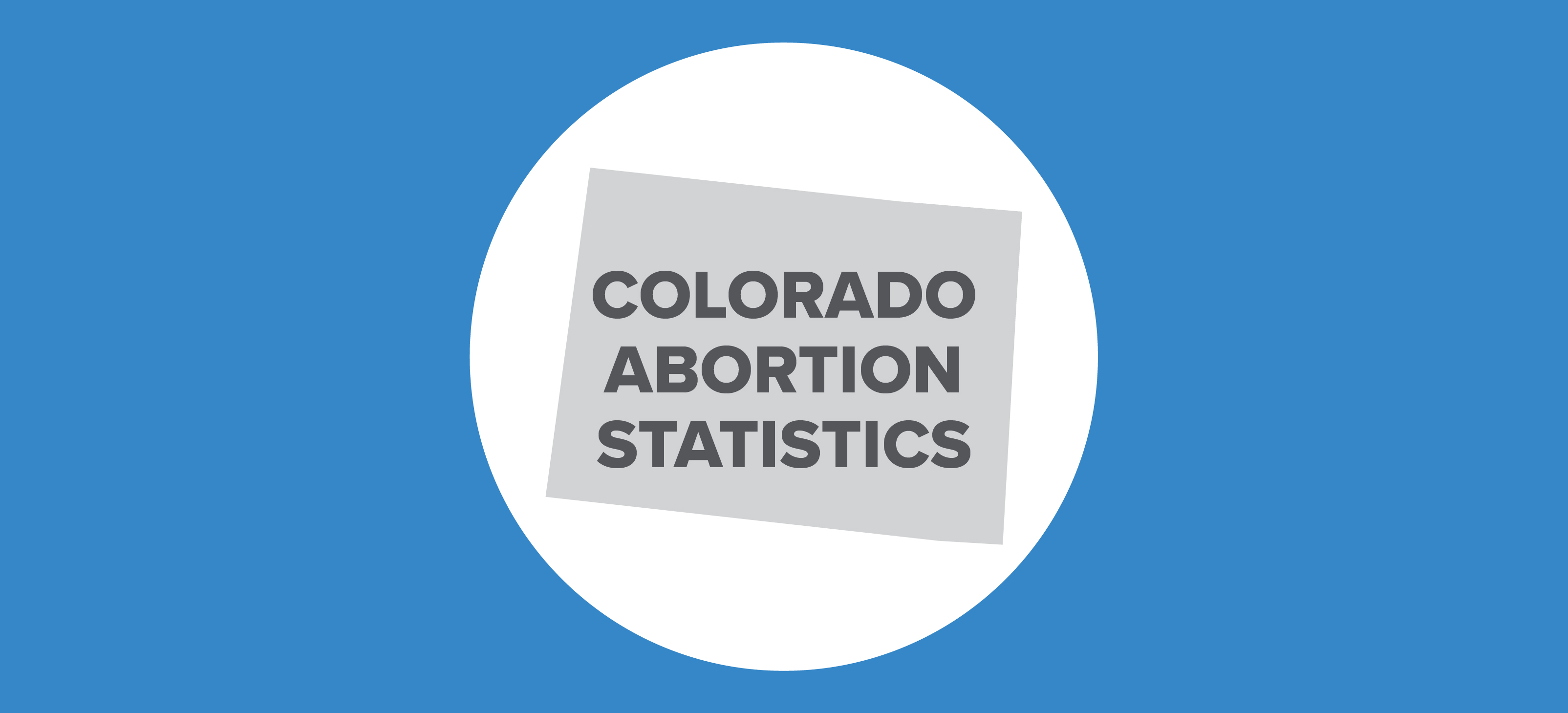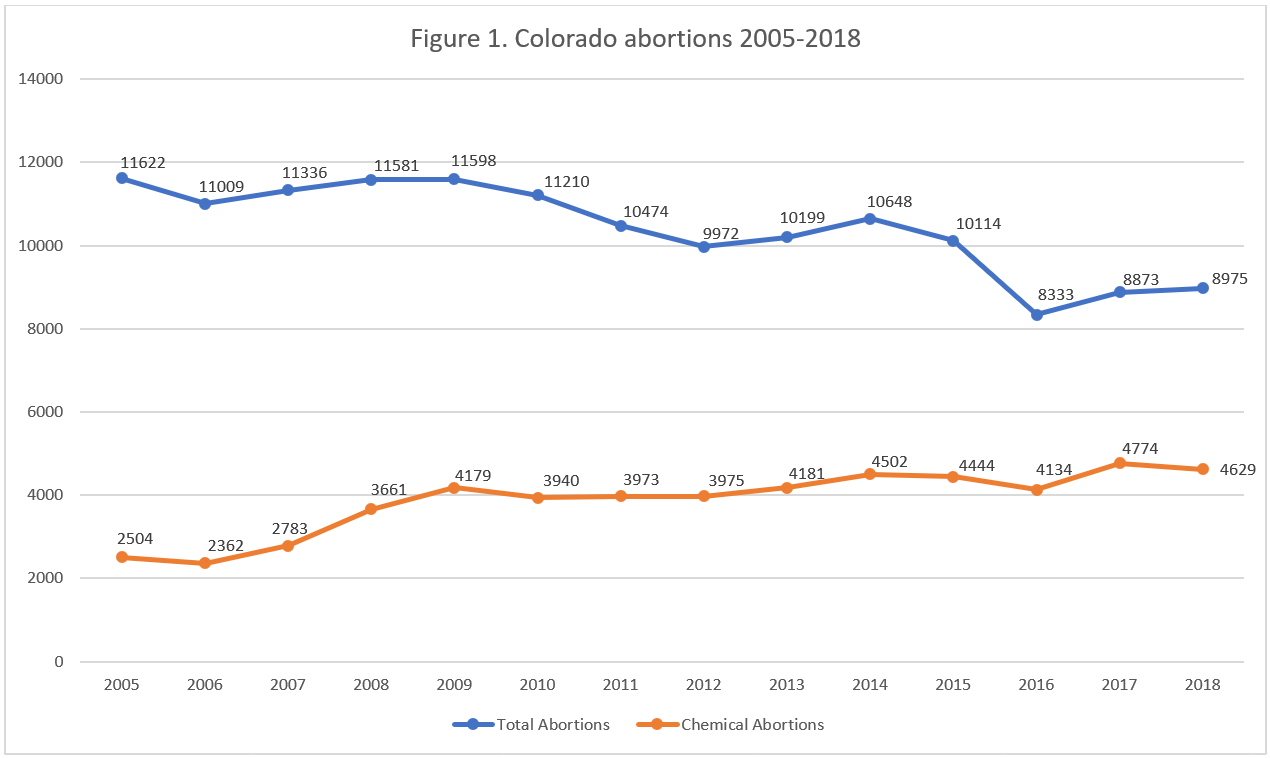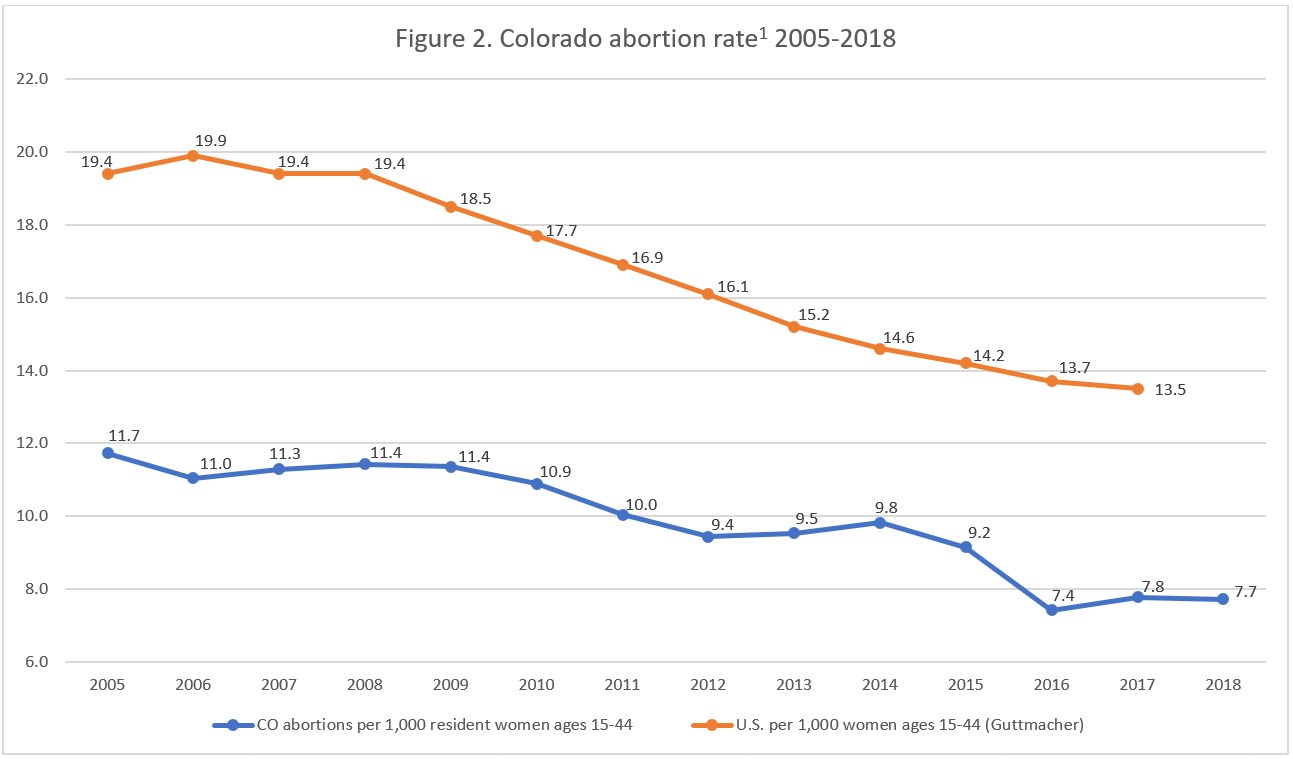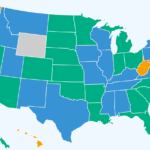Abortion Reporting: Colorado (2018)

Colorado’s 2018 abortion report shows that abortions in the state increased slightly from 2017. The report was published on the Colorado Department of Public Health and Environment website in July 2019.
Changes in Colorado Abortions, 2017-2018

Information on Planned Parenthood’s Colorado market share is not publicly available.
Abortion Totals and Trends
In 2018, 8,975 abortions were reported in Colorado, an increase of one percent from the previous year (Fig. 1). However, chemical abortions declined by three percent from the total reported in 2017. Total abortions have dropped by 49 percent from 1980, the year the highest number of abortions was reported in Colorado, although the report cautions that reporting has not always been consistent from year to year. Chemical abortions have jumped by 415 percent from 2003, the first year of chemical abortion data provided to the Charlotte Lozier Institute, despite the slight drop between 2017 and 2018. Chemical abortions made up 52 percent of total reported abortions in 2018. The Charlotte Lozier Institute estimates that Colorado’s 2018 abortion rate was 7.7 abortions per 1,000 women of childbearing age (Fig. 2).
State Report Summary
Eighty-eight percent of the abortions reported in Colorado in 2018 were performed on state residents. Ten percent of the abortions were performed on women under the age of 20, including three percent on women under the age of 18. Fifty-eight percent were performed on women in their twenties, and 29 percent were on women in their thirties. Not quite four percent of the abortions were performed on women age 40 or older.
Non-Hispanic white women composed the largest racial group, undergoing 51 percent of the abortions reported in Colorado. Seven percent of the women were black, six percent were white Hispanic, and another six percent were a different race. However, the true percentage of abortions performed on women of each race may have been different because 30 percent of the women did not have their race reported.
Seventy percent of the abortions were on unmarried women, and almost 16 percent were performed on married women, although 15 percent of the women did not report their marital status. Fifty-seven percent of the women had no living children. Eighteen percent had one child and 23 percent had two or more. The number of living children was not indicated for two percent of the women. Two-thirds had never had an abortion previously, 21 percent had one prior abortion, and nine percent had more than one. Three percent did not report their number of previous abortions.
More than half the abortions reported in Colorado, 52 percent, were chemical abortions. Thirty-six percent were suction curettage procedures, and three percent were performed using dilation and evacuation. An additional three percent were performed with other procedures, and five percent were performed using unreported methods. Ninety-eight percent of the abortions were performed in clinics or doctor’s offices, and not quite two percent occurred in hospitals.
Two-thirds of the abortions reported in Colorado were performed at eight weeks of gestation or earlier. Fifteen percent occurred between nine and 10 weeks, and seven percent were performed between 11 and 12 weeks. Three percent of the abortions were performed between 16 and 20 weeks of gestation. Almost four percent, 323 abortions, occurred at 21 weeks of gestation or later. This is nearly three times the national estimate of 1.3 percent of all abortions performed after 20 weeks. Colorado places no limits on when in pregnancy abortions may be performed and draws women from all over the country for late-term abortions.
Non-Resident Abortions
Thirty-four states report whether abortions were performed on resident or nonresident women, but fewer identify the states that nonresident women are from. Colorado’s annual report lists each state from which more than two women traveled to Colorado for abortions. Between 2003 and 2018, 48 states had more than two women travel to Colorado during at least one reporting year. Only Delaware and Maine did not have more than two women travel to Colorado for abortions during any year between 2003 and 2018.
Women from neighboring Wyoming composed the largest group of nonresident women who traveled to Colorado for abortions. In 2018, abortions performed on Wyoming women made up 3.7 percent of all abortions reported in Colorado. Between 2003 and 2018, the years of data provided to CLI by the state health department, abortions on Wyoming women composed 4.4 percent of the total number of abortions reported in the state during the 16-year period.
New Mexico and South Dakota each had 130 women (1.4 percent of the total) travel to Colorado for abortions in 2018. From 2003 to 2018, New Mexico women composed 1.4 percent of the total number of women who obtained abortions in Colorado, and South Dakota women made up 0.7 percent. The two states highlight the varied nature of abortion provision in Colorado. Many of the out-of-state women who get abortions in Colorado come from states that place restrictions on abortion (such as South Dakota). However, others come from states like New Mexico, which has liberal abortion laws and places no restrictions on when in pregnancy an abortion may be performed.
State Ranking
In the Charlotte Lozier Institute’s 2016 survey of abortion reporting across the country, Colorado was ranked at 35th best, toward the bottom of the list. Since then, Colorado has improved its reporting, now making its annual abortion reports available online. While Colorado already reports much of the data it collects, the Centennial State could include the level of education of women who get abortions in the state and the number of abortions performed at each Colorado abortion facility. Colorado could also cross tabulate its data to provide a more detailed picture of abortion occurrence in the state, such as the types of abortion procedures that are used at different gestational ages. Although the Colorado legislature has attempted to require the collecting of abortion complication data, the legislation has not passed, and no information on abortion-related complications is available.


- Starting with the 2018 abortion reports, abortion rates are calculated by the Charlotte Lozier Institute to allow for easier state-to-state and year-to-year comparisons. Rates were calculated by CLI using population estimates from the United States Census Bureau. The rates were calculated using the following formula: (total number of abortions performed in Colorado ÷ number of resident women ages 15-44) x 1,000. Rates may differ slightly from previous CLI articles due to revised population estimates.


























